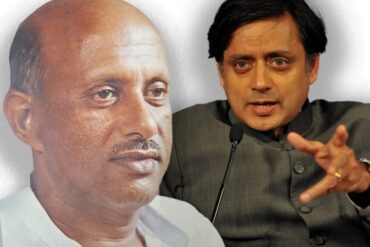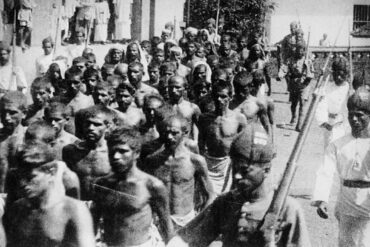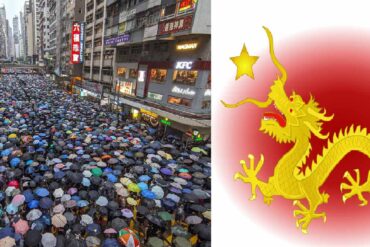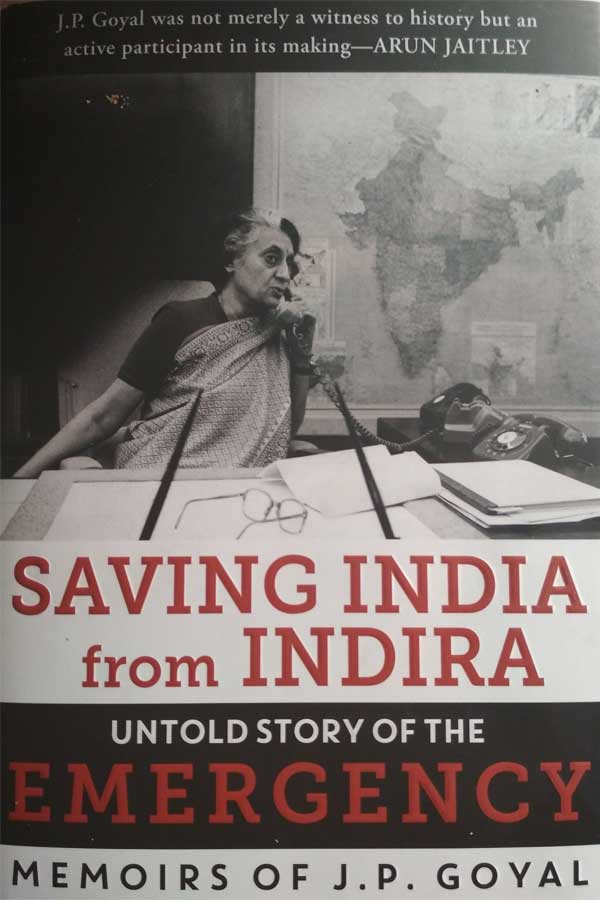On 12 June 1975, Justice J.M.L. Sinha delivered the judgement declaring the election of Smt Indira Gandhi as ‘void’. Within one and a half hours, we got the news that Smt Indira Gandhi had obtained a stay order for twenty days.
The stay order was obtained through misrepresentation made on her behalf by her advocate Shri S.C. Khare. It was given in writing that as it was a question of election of the leader of the party and the office of the prime minister was involved, some time would be taken by the Congress party to elect another leader. This order was passed ex parte by Justice J.M.L. Sinha while our advocate Shri R.C. Srivastava, who was in Allahabad at that time, was not heard. Our advocate, while knowing that the stay order had been passed without a hearing, went to the learned judge’s residence and told him that the order was passed without hearing him, but the learned judge did not change his order.
Smt Indira Gandhi engaged Shri N.A. Palkhivala as her Senior Advocate. The order of Justice J.M.L. Sinha was that the stay order would continue for twenty days or till the time when the appeal was filed in the Supreme Court by Smt Indira Gandhi, whichever took place earlier.
At that time, Justice V.R. Krishna Iyer was the vacation judge in the Supreme Court. The rejoinder affidavit was filed on 22 June on behalf of Smt Indira Gandhi and the matter came up for hearing the next day, 23 June 1975, before Justice V.R. Krishna Iyer. Shri Palkhivala started the arguments. Such stay applications in the Supreme Court required only one or two minutes. The arguments on the stay application surprisingly took place, however, and went on up to 5.05 pm. The court had to sit beyond time and without any lunch interval. The orders were reserved and it was ordered that the learned judge would deliver the judgement at 3.30 pm. the next day (24 June 1975) in his chambers.
At 3.30 p.m., the doors of Justice Krishna Iyer’s chambers opened. We entered inside the learned judge’s chamber. He had got cyclostyled a number of copies of his judgement, which contained twenty-three cyclostyled pages each. The judge read out the operative portion of the order. In the said order, though he had observed that the merits of the appeal could be gone into only at the time of the hearing of the appeal, he also observed that he had hesitated to prolong the ‘absolute stay’ granted by the Allahabad High Court as the High Court’s finding, until overruled, held good.

Even though the office of the prime minister was not involved in the election petition filed by Smt Indira Gandhi, nevertheless the learned judge gave an elaborate order and held that she could still continue in the office of the prime minister. However, she could not participate in the parliamentary proceedings as an MP but as the prime minister, she could speak in Parliament (without a right to vote).
I received a telephone call from Shri Raj Narain from his residence in Delhi on 8, Dr. Bishambar Das Marg. He asked me to bring the order and explain the same to the political leaders who had gathered at that time in Delhi at Shri Morarji Desai’s house at 5, Dupleix Road. I went to Shri Raj Narain’s residence and from there we went to Shri Morarji Desai’s place. Shri Jayaprakash Narayan and Shri Morarji Desai were sitting together. I read out the relevant portions of the order to the leaders of the Opposition gathered there. Shri Piloo Mody thereafter asked me to accompany him to a room, where Shri Asoka Mehta, Shri L.K. Advani, Shri Piloo Mody and I drafted the resolution that was to be released to the press by the Coordination Committee of five Opposition parties, namely the Congress (O), the Bharatiya Lok Dal, the Jana Sangh, the Socialist Party and the Akali Dal.
The salient features of that resolution were that Smt Indira Gandhi had not got a full stay order from the Supreme Court and under the circumstances she could not remain the prime minister. She was found to be guilty of corrupt practices, and even Justice Krishna Iyer in his order had indirectly brought up the issue of political propriety and democratic dharma, saying that it would be better to observe judicial silence on it. It was pointed out that the principles and practice in democratic countries had been that if a person was under a cloud of suspicion, then he or she must vacate the office held by him or her. By the said resolution, a sort of advice was given to Smt Indira Gandhi that she should quit the high office of the prime minister. The said resolution was published in the newspapers of 25 June 1975.
In the evening of 25 June 1975, there was a large meeting at New Delhi’s Ramlila Maidan, which was addressed by Shri Jayaprakash Narayan and other leaders. In that meeting, Shri Jayaprakash Narayan declared that if Smt Indira Gandhi did not quit the office of the prime minister with grace, the Coordination Committee would be compelled to undertake a peaceful satyagraha against her continuance in that office. Shri Raj Narain also addressed the meeting, which ended at about 9 p.m.
Shri Raj Narain went to his residence thereafter. From there, he telephoned me and requested me to come to his residence, where he wanted to talk to me on many issues. I reached there at about 10–10.30 p.m. We discussed many connected issues, political as well as about the case. We sat together till about midnight.
I wanted to leave for my residence but Shri Raj Narain said that it was not proper for me to go at that late hour. He said that some foul play may be done by the other side if I went out at that odd hour as I was appearing for him in the case and the other side could not be relied upon. Under these circumstances, I was asked by Shri Raj Narain to spend the night at his residence. I telephoned my wife at home and informed her that I would not be coming back home that night.
Two cots, one for myself and the other for Shri Bhrigunath, were put on the rear lawns of Shri Raj Narain’s residence. I went to bed. At about 3 a.m., I was woken up by Urmilesh Jha, who was the former secretary to Dr. Ram Manohar Lohia and was at that time working as a secretary to Shri Raj Narain. He told me that the entire house was surrounded by the police and that Shri Jayaprakash Narayan had been arrested at the Gandhi Peace Foundation. Shri Bhrigunath also woke up. Urmilesh Jha told me that Shri Raj Narain, who was inside, had asked me not to get up, otherwise the police might arrest me too. I got up nevertheless.
I saw policemen all around. I could not restrain myself and entered the room where Shri Raj Narain was surrounded by the police. He introduced me to the police officers while making preparations to go with them. A warrant was served on Shri Raj Narain, who showed the same to me. It was under Section 3 of the Maintenance of Internal Security Act, 1971 (MISA) and signed by Shri Sushil Kumar, District Magistrate (DM), Delhi. I found that the receiver of Shri Raj Narain’s telephone was put off the hook. I rebuked the police officers for doing so, and told them that they could only arrest Shri Raj Narain and not interfere with other facilities in the house such as the telephone.
Urmilesh Jha told me later that Shri K.S. Radhakrishna, Secretary of the Gandhi Peace Foundation, had told him over the phone that Shri Jayaprakash Narayan had been arrested. Shri Raj Narain had his bath and packed some books to take along with him. In the early hours of the morning, he was taken away in a car by the police in my presence. After he left, Smt T. Lakshmi Kantamma, an MP, who was later a member of the Working Committee of the Janata Party, arrived at Raj Narain’s residence. Shri Era Sezhiyan, who was the leader of the Dravida Munnetra Kazhagam (DMK) in the Lok Sabha at that time and who was living in the neighbourhood, also arrived there. They both enquired about all that had happened.
The Statesman and The Hindustan Times, Delhi’s two leading newspapers at the time, somehow appeared the next day, though other papers could not appear. The main news was that the President of India had declared National Emergency on account of internal disturbances under Article 352 of the Constitution of India.
I went to my residence. Immediately after reaching, I received a phone call from someone from The Hindustan Times who asked for my reaction to the proclamation of the Emergency. I dictated my views on the telephone, stating that there was no national emergency and it was only Smt Indira Gandhi’s own personal emergency as she was in trouble and could not get a full stay order from the Supreme Court. I further stated that as Smt Indira Gandhi, according to democratic norms, must vacate the office she was holding, she had done this mischief merely to keep herself in office. I said that democracy was finished in this country, and that she ought to have resigned on the day when she was found to have committed corrupt practices.
We came to know that the power connections of almost all the newspapers in Delhi and outside were disconnected at the instance of the government. On 27 June, there was no newspaper. Along with the Emergency, censorship of the press was introduced, and newspapers were to be published under censorship. In the beginning, for one or two days, the newspapers protested in various ways. The Delhi edition of The Indian Express on 28 June 1975 kept the editorial column blank as a mark of protest. It is said that pressure was exerted on the members of the press to write editorials favourable to the government.
Many political leaders and workers of the Opposition were arrested overnight on 25–26 June, and in the following days. It was a reign of terror in the country.
Memoirs of J P Goyal, Raj Narain’s lawyer, on the legal course of events leading up to the proclamation of Emergency and thereafter.
Excerpted with permission from Saving India from Indira edited by Rama Goyal, published by Rupa, June 2019.







